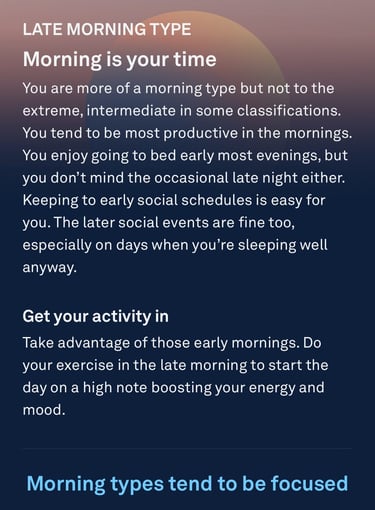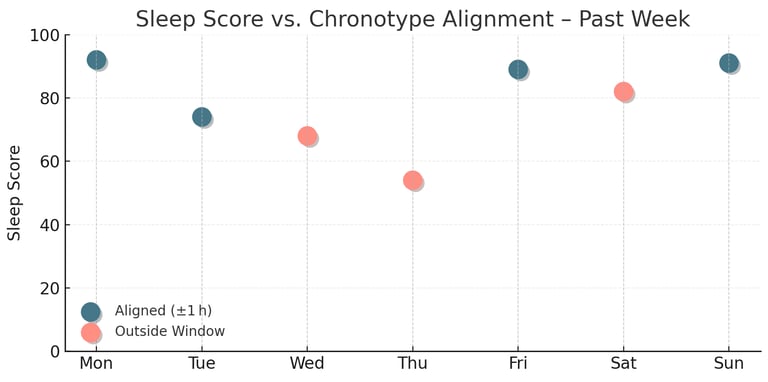The Data That Changed My Sleep
This post dives into how the Oura Ring helped me debug my sleep, spot patterns across my cycle, and finally start syncing rest with what my body actually needs. Because every version of you deserves good sleep and good data.
8/6/20253 min read


The clear‑cache moment
Picture this: you’re shopping online and the site freezes—images won’t load, buttons ignore you, the spinny wheel mocks your existence. You attempt to refresh the page, only to see the “This page isn’t working” error show up. So you clear the browser cache, hit refresh, and poof! Pages reload like new, buttons work, images snap back.
That simple “clear it out and start fresh” button is exactly what a good night’s sleep does for your brain. All the half‑finished thoughts, to‑do lists, and random TikTok songs stuck in your head get swept away overnight, so you wake up with a clean, speedy mental browser ready for a brand‑new set of tabs.
So why did I start measuring my sleep? Anyone who knows me knows I need a solid eight hours of sleep. When I’m rested I conquer the day, when I’m not, I contemplate crawling back under the covers forever. After seeing how a solid night’s sleep could make or break my day, I wanted to know more. I wanted to see the data. So last year I bought an Ōura Ring. A little titanium band that tracks heart rate, movement, and temperature while I’m sound asleep.
When friends see the ring they always ask, “Do you like it?”
Short answer: I love it.
Long answer: Keep reading.
Meet my sleep chronotype




After about three months the app unlocked my chronotype — my personal sleep‑wake schedule.
In other words, mornings are my power window.
If I go to sleep by 10pm and wake up at 6:30am then I will have peak energy.
The best part, Oura gives each night a “Sleep Score,” so I can instantly tell if I hit my window.
What the data has taught me
Here’s a look at my most recent seven nights of sleep. When my midpoint stayed within an hour of 2 : 38 AM, my Sleep Score stayed in the high‑80s/90s. If I drifted even a little bit, my score dropped 10‑30 points. The pattern is impossible to ignore, one off night shows up in the data and in how I feel the next day.


The lessoned learn here… consistency is key. Since locking in that schedule:
My body wakes up before the alarm.
The dreaded 2‑3 PM crash vanished.
Work productivity spiked.
I’m legitimately happier.
Tiny tweaks that make a huge difference
Sunlight first. Let natural light be the first thing that your eyes see.
Dim screens at night. Blue light keeps your brain in daytime mode. If you must scroll, switch to Night Shift on your phone.
Same bedtime ± 30 min. Consistency beats chasing a perfect eight hours.
Respect the rhythm. Your circadian clock runs on light and regularity. Treat it like the superstar project manager it is.
Ready to stop guessing and start syncing? The Oura Ring has become one of my favorite wellness upgrades. Gentle, data-driven, and surprisingly intuitive once you learn how to read it. If you’re curious about tracking your own sleep and recovery, you can check it out on Amazon by clicking the button below.
Version Her
Helping women optimize health, habits, and wellness.
Wellbeing
Balance
info.versionher@gmail.com
+9803221639
© 2025. All rights reserved.
